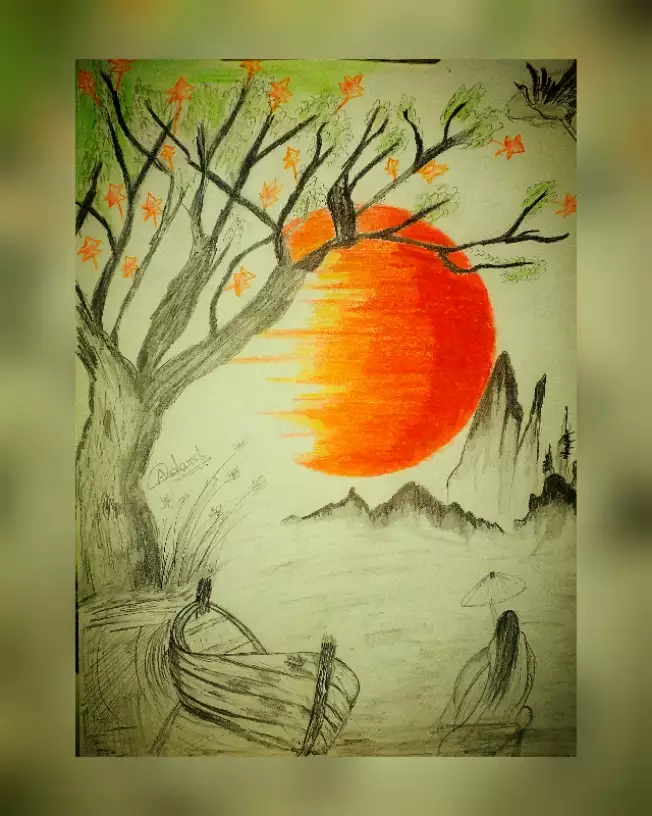Comprehending the Meaning Behind Significant Trump Art Creations
Beginning on an Aesthetic Journey Through the Lyrical Interpretations of Nature in Impressionist Landscapes
Each brushstroke, each play of light and shadow, and each shade selection in their jobs talks quantities regarding the artists' deep link to nature and their capacity to equate its charm onto the canvas. As we check out the lyrical interpretations of nature in Impressionist landscapes, we are invited to immerse ourselves in a world where reality and feeling intertwine, supplying a glance into the musicians' profound recognition for the all-natural world.
The Captivating Brushstrokes of Claude Monet
Claude Monet's proficiency of brushstrokes goes beyond plain strategy, imbuing his landscapes with a heavenly quality that mesmerizes and captivates customers - trump art. His ingenious use of color and light, integrated with his unique brushwork, produces a sense of motion and life within his paints. Monet's distinguished collection of works illustrating water lilies and his renowned haystacks showcase his capacity to catch the short lived results of light and ambience

Taking On Light and Darkness With Camille Pissarro
Embodying a similar respect for the interplay of light and shadow, Camille Pissarro's imaginative vision unfolds as an unified exploration of the environment's luminous nuances. Pissarro, a crucial number in the Impressionist movement, masterfully caught the vibrant relationship between light and darkness in his landscapes. His proficient usage of shade and brushwork allowed him to communicate the refined changes in light that specify different times of day and seasons.
Pissarro's paints typically include dappled sunlight infiltrating leaves, casting detailed patterns of light and darkness on the earth below. In works such as "Hoar Frost, the Impact of Snow, Pontoise," Pissarro skillfully shows the crisp brightness of wintertime sunshine compared with the great shadows that define the snowy landscape. By welcoming both light and shadow in his structures, Pissarro welcomes visitors to immerse themselves in the natural appeal and short-term effects of light on the planet around them.

With Pissarro's jobs, we are reminded of the transformative power of light and darkness, inviting us to pause and appreciate the short lived minutes of appeal present in the everyday landscapes that surround us.
A Symphony of Color Styles by Edgar Degas
Edgar Degas coordinates a dynamic harmony of colors in his masterful art work, infusing his structures with a dynamic interplay of shades that captivate the customer's look. Understood mostly for his ballet dancers and intimate scenes of Parisian life, Degas skillfully controlled colors to convey state of mind and activity in his paints. trump art. His usage of strong, contrasting shades and subtle tonal variants developed a sense of deepness and vibrancy within his jobs
Degas' shade combination often was composed of abundant blues, deep eco-friendlies, and warm oranges, which he used with certain brushstrokes to catch the essence of his topics. Whether representing a ballerina mid-performance or a team of good friends talking at a cafe, Degas' colors not just portrayed the scene but also stimulated a sense of emotion and power.
In Addition, Degas' trial and error with light and shadow added an added this link layer of complexity to his color make-ups, improving the overall ambience of his paintings (trump art). Via his proficient control of color, Degas developed a visual continue reading this harmony that continues to resonate with customers today
Exploring Nature's Tranquility With Berthe Morisot
Berthe Morisot's creative vision supplies a tranquil departure from the lively color harmonies of Edgar Degas, as she captures the harmony of nature in her evocative landscapes. Understood for her delicate brushwork and intimate portrayals of day-to-day life, Morisot's landscapes radiate a sense of peace and consistency.
Morisot's paintings commonly feature soft, soft tones that convey a sense of peace and serenity. Her jobs, such as "The Cradle" and "Summer's Day," showcase her capacity to capture the subtle elegance of nature in a manner that is both reflective and soothing to the audience.
Unlike several of her Impressionist counterparts that concentrated on bold shades and vibrant compositions, Morisot favored to create mild, introspective scenes that invite the customer to pause and show. Through her skillful use light and darkness, Morisot develops a sense of harmony that resonates with the customer on a deep psychological degree.
The Emotional Landscapes of Vincent Van Gogh
Vincent Van Gogh's landscapes clearly convey a deepness of emotion via their dynamic brushwork and expressive use color. The Dutch post-impressionist artist is renowned for his capacity to record raw and extreme feelings in his paints, going beyond traditional representations of nature. Van Gogh's turbulent individual life, noted by psychological wellness battles, greatly affected his art, instilling his landscapes with a feeling of worry, moody, or exuberance.
In works such as "Starry Evening" and "Wheatfield with Crows," Van Gogh's swirling brushstrokes and vibrant shade selections stimulate an extensive emotional reaction from viewers. The turbulent skies and perturbed landscapes in his paints mirror his internal turmoil and emotional disturbance, welcoming customers to look into the complexities of his psyche.
Van Gogh's one-of-a-kind aesthetic language, defined by exaggerated perspectives and vibrant usage of shade, creates landscapes that resonate with visitors on a deeply psychological level. Through his art, Van Gogh welcomes us to see nature check my reference not simply as an outside truth however as a mirror of our innermost feelings and feelings.
Verdict
To conclude, the impressionist landscapes of musicians such as Claude Monet, Camille Pissarro, Edgar Degas, Berthe Morisot, and Vincent Van Gogh use a fascinating and distinct visual analysis of nature. With their use brushstrokes, feeling, light, and shade, these artists have created a symphony of pictures that stimulate a sense of serenity and beauty in the environment. Their works remain to influence and captivate viewers with their lyrical analyses of the landscapes around us.
Each brushstroke, each play of light and shadow, and each shade choice in their works talks volumes about the artists' deep link to nature and their capability to convert its beauty onto the canvas. His innovative usage of color and light, integrated with his distinct brushwork, creates a feeling of motion and life within his paints. His skilled usage of color and brushwork enabled him to share the refined shifts in light that define different times of day and seasons.
